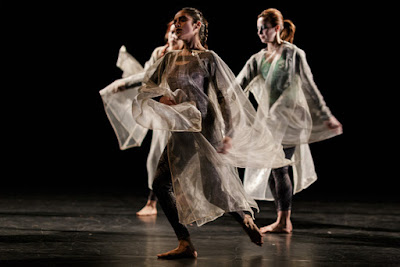 |
| CAPTION A graduate student gains hands-on experience with state-of-the-art nanotechnology equipment in the Center for Nanotechnology Education and Utilization Teaching Cleanroom. CREDIT |
Topics: African Americans, Diversity, Diversity in Science, Existentialism, Nanotechnology, STEAM
Related: Be Thankful for What You Got, William DeVaughn, Genius Lyrics
Note: When this post appears, I will be in a midterm in Solid State Devices. I purposely did not post yesterday to let the tribute to Ms. Katherine Johnson Tuesday be an appropriate and respectful dénouement. After Friday seminar, I will take a needed spring break.
Nanotechnology is STEM at the 10-9 meter scale: a nanometer. To advance any understanding at that level, there has to be a respect for objective truth:
A proposition is considered to have objective truth when its truth conditions are met without bias caused by a sentient subject. Scientific objectivity refers to the ability to judge without partiality or external influence, sometimes used synonymous with neutrality. Wikipedia
After Watergate, a political party created its own echo chamber in print, radio, television and the Internet that now confuses objective versus subjective truth, i.e. that which matters in ones own opinion is therefore defended as "fact." We're daily inundated with the solipsistic subjective truth of a pathological liar, which that in and of itself is an area of mental illness as democracy is not a matter of "opinion," but a debate over a shared view of facts and what if anything will be done to ameliorate any problem put forwards. Ostrich politics doesn't even work for ostriches: like most foul, their not burying their heads in sand, they eat it and gravel to aid with their digestion.
Raking and mopping will not address climate change; neither will denying the spreading of the coronavirus in the west. It doesn't help that funding for the CDC and HHS were cut, and a lot of government agencies designed to fight pandemics either shuttered, unfunded or both. Forgive me if I'm dubious that the party whose senator brings a snowball to the well of the senate to disprove climate change won't eventually cut what we could innovate in nanotechnology, particularly expanding it to underrepresented groups to participate. They wouldn't see the value it gives to all Americans because they are just that myopic.
November 3, 2020 might as well be Judgment Day, when we either right this ship of state from the impact of ignoramuses and "alternative facts," or this dark momentum will edge us over the precipice into dystopia. Once America falls - and I'm sure her enemies know this - all other democracies around the world and civilization, is in peril.
Like the right wing truckers with smokestacks to "own the libs": we all have to live on the same planet: cooperation, or extinction.
*****
New Louis Stokes Regional Center of Excellence created with National Science Foundation funding
Traditionally, minority students have been underrepresented in science, technology, engineering and mathematics (STEM) programs -- and in the STEM marketplace. And as the U.S. innovation economy continues to grow, there comes an increasing requirement for skilled STEM workers to maintain the nation's status as a global leader. However, a significant challenge for workforce diversity exists because of limited access to underrepresented populations to quality STEM education and opportunities for STEM employment.
To try and overcome this challenge and ensure national competitiveness and sustained STEM global leadership, the Penn State Center for Nanotechnology Education and Utilization (CNEU), along with Norfolk State University (NSU) and Tidewater Community College (TCC), will form the Southeastern Coalition for Engagement and Exchange in Nanotechnology Education (SCENE) Louis Stokes Regional Center of Excellence in Broadening Participation. A total of $1.2 million in funding for this center was recently awarded by the National Science Foundation.
SCENE will focus on increasing recruitment and retention of underrepresented minority (URM) undergraduate and graduate students at Historically Black Colleges and Universities (HBCU) and at community colleges with minority and underrepresented student enrollments. Recruitment efforts will be aimed at students studying STEM through nanoscience and nanotechnology education and engagement.
Nanotechnology center to help broaden participation of minorities in STEM fields
6 December 2018, Penn State
SO let us summon a new spirit of patriotism; of service and responsibility where each of us resolves to pitch in and work harder and look after not only ourselves, but each other. Let us remember that if this financial crisis taught us anything, it’s that we cannot have a thriving Wall Street while Main Street suffers – in this country, we rise or fall as one nation; as one people.
We Rise and Fall as ONE Nation, November 5, 2008, President-elect Barack Obama, New York Post
"We must learn to live together as brothers or perish together as fools." Dr. Martin Luther King, Jr.
